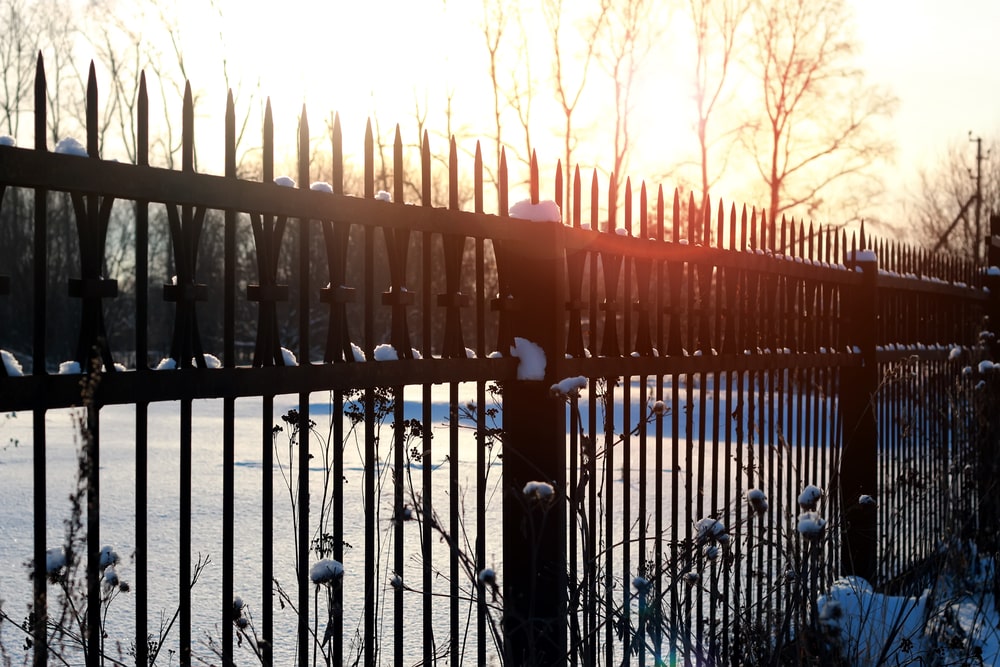You want it to look good for many years to come when you have a fence. As with anything, making sure your fence lasts requires some necessary routine maintenance steps, especially if you live in a cold region prone to snow. No matter what your fence is made of, snow and ice can damage it over time, whether through wood rot, insect infestation, or moisture damage from having wet snow piled against it. And a great way to keep your fence looking fresh and new is to use a kind of snowmelt salt as a shield against that snow and ice damage. Read on below to learn more about how to protect your fence from snow and ice damage using one of nature’s most versatile and straightforward compounds: salt!
The Problem With Snow
Suppose you live in a region with a regular winter snowfall. In that case, especially if that snowfall is generally heavy and leaves some accumulation for an extended period – your fence is likely to be under fierce attack from the elements. After all, snow is water, and water causes damage over time – to wood, vinyl, and metal fences. For instance, a wood fence can rot if you leave a large snowdrift touching it. The rot tends to start at the soil level, where moisture and insects eat your fence alive.
Wood decay is a real problem, and you should watch out for signs of decay or insect infestation throughout the year. It’s essential to fix any issues you find before winter comes, thus giving your fence a fighting chance against the oncoming elements. Keep your fences clear of tree debris, wet leaves, pinecones, and the like, because these things can make wood rot worse.
So it can’t be overstated: routine maintenance and cleaning of your fence before the winter season will give your fence a fighting chance against the elements when they do happen, but even then, there are certain things you can do to protect your fence when the snows do start to fall.
Remember that wet snow will do more damage to your fence than dry snow will, so it’s super critical to keep that wet snow away from your fence. Don’t let wet snow drift up against your fence – it’s the weight and the moisture of those drifts that will do the damage.
If you do end up with snow or ice on your fence, it’s essential to tackle it quickly and get it off of there as soon as possible. Use a soft broom or brush, not a shovel, as a shovel might damage your fence further.
Why Salt?
Salt? The stuff you put on your eggs?
Not quite. The chemical substance – sodium chloride – is the base of all of the different kinds of salt, but the mineral mixes differentiate one type of salt from another. This isn’t an article about all the different types of salts, but it is essential to note and understand that the kind of salt you need to protect your fence is not the same salt that you put on your eggs. That salt, known as table salt, is what you’ll find in your standard salt shaker. It’s edible and delicious and adds flavor to whatever you add it to.
You’re probably aware of the other kinds of culinary salt out there – kosher salt, sea salt, Himalayan salt, and the like – but again, these are not the kinds of salt that you need to use on your fence.
But just like the different kinds of salt to put on food, there are a lot of different kinds of salt used to melt snow. If you live in an area of the country that gets any type of winter precipitation, chances are your city has a salt truck that will drive around and deposit road salt on your city’s streets to prevent them from freezing and getting slippery.
Interestingly, the most common form of road salt is pure sodium chloride, also known as halite. Unfortunately, this kind of salt is terrible for a lot of different types of structures, including concrete, asphalt, stone, and brick. It’s also poisonous to your pets and can contaminate your groundwater. Therefore, it’s not the best choice to use to protect your fence.
Look for salt that is marked “pet safe;” these salts have the non-corrosive properties you need to protect your fence. The key is not to use too much – use enough to act as a snow barrier around the fence. These pet-safe salt alternatives, made of a chemical formulation that functions and works like salt, tend to be made of pet-safe, non-toxic materials. This pet-safe snowmelt can create a protective barrier that will prevent snow and ice from clinging to your fence for several days.
As we said above, many of the salts used by road clearing crews, for example, can cause more corrosion to your fence. Therefore, it’s critical to take a two-pronged approach to protect your fence – protect it from the snow with non-toxic snowmelt, and protect it from road salt by cleaning your fence carefully as soon as the snow is fully melted. It is critical to use only non-corrosive salt products near your fence.
Salt is a complex chemical, and it’s essential to understand how to use it safely to protect your fence and how to protect yourself and your fence from the dangers that the wrong kind of salt can pose. Protecting your fence is a year-round job; be sure you have the tools you need to keep your fence in top shape even in the worst weather.
If the weather gets the best of your fence and you notice damage, you should call the professionals at Fencing Direct, and our experts will be happy to help you find the parts you need to repair your fence.


